Research Interests
Our Center is focused on the synthesis and study of a large variety of compounds, including oxides and intermetallics, with interesting structural instabilities, and unconventional electronic and magnetic ground states. We are particularly interested in multiferroic materials, which exhibit two or more ferroic orders simutaneously, e.g. ferromagnetism, ferroelectricity, and ferroelasticity. The magnetic and ferroelectric properties are investigated by various imaging techniques, such as atomic force microscopy, piezoresponse force microscopy, transmission electron microscopy, scanning tunneling microscopy, as well as neutron scattering and x-ray diffraction. A broad range of samples are grown by solid state reaction, chemical vapor transport, chemical solution method, high-temperature flux, optical floating zone, high-pressure synthesis andPLD, from polycrystal to single crystal and thin film.
New Discovery
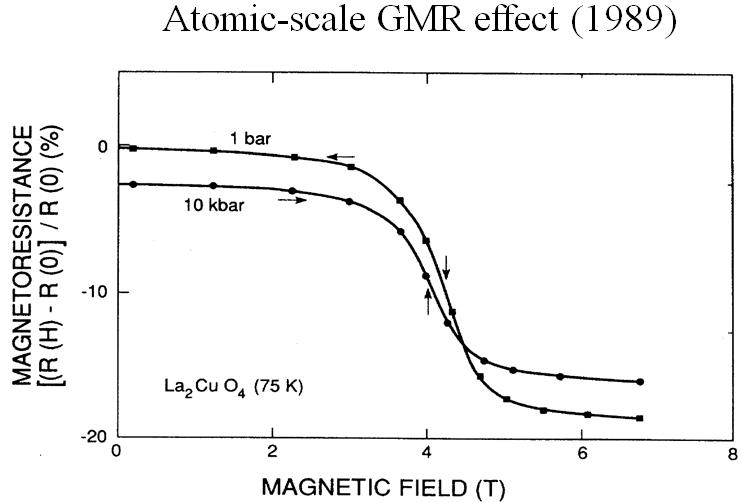 |
The fist report of atomic-scale GMR (Giant Magnetoresistance) effect in La2CuO4, reported in "solid State Communications 65, 111 (1988)" and "PRB 39,4395 (1989)". This work can be compared with 1 micrometer-size-multilayer GMR effect reported by Albert Fert and Peter Grunberg, who received Nobel Prize in Physics in 2007 for their work on GMR in 1988-1989." |
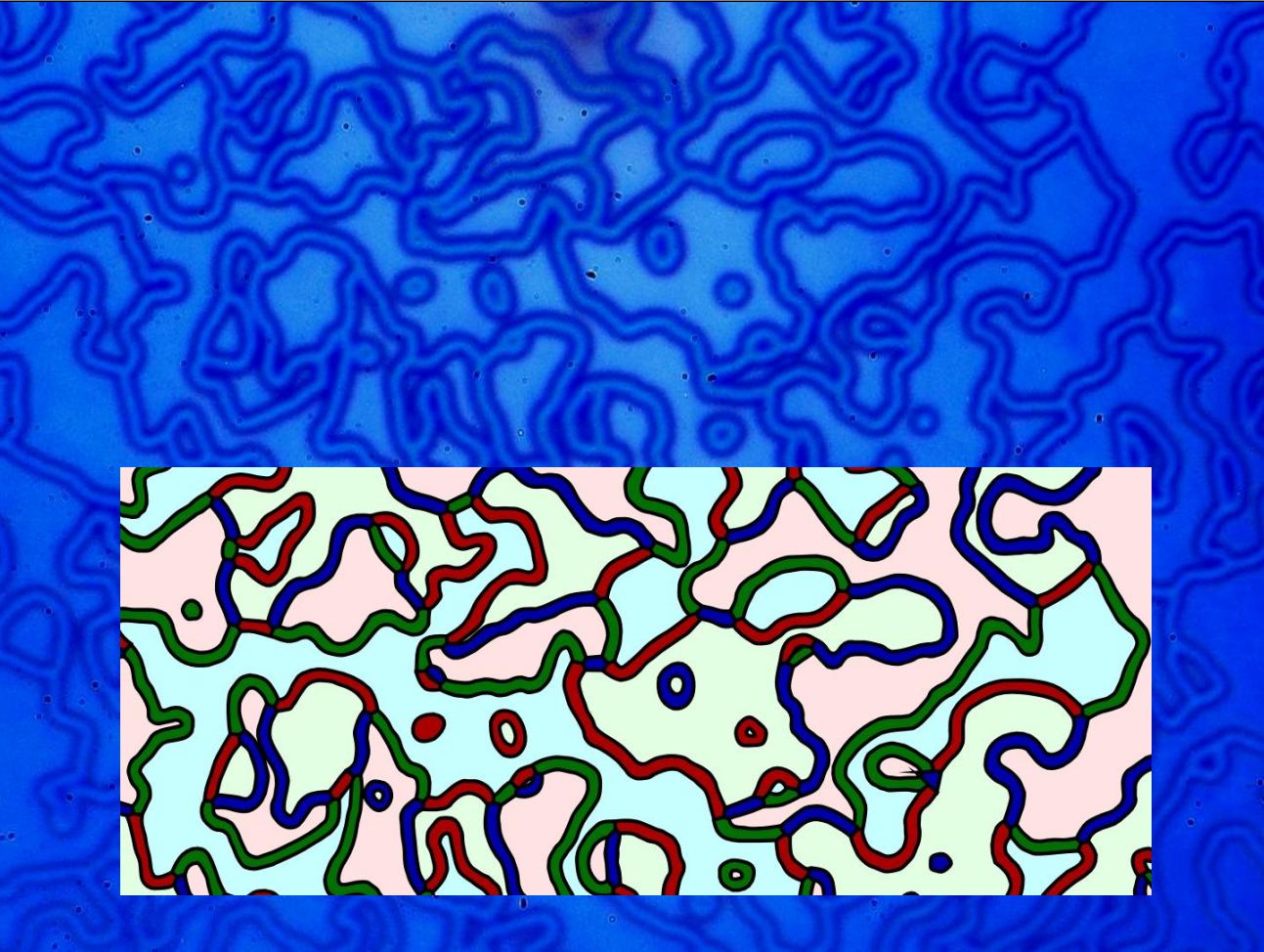 |
The interaction among topological defects can induce novel phenomena such as disclination pairs in liquid crystals and superconducting vortec lattices. Nanoscale topological vortices with swirling ferroelectric, magnetic, and structural antiphase relationships were found in multiferroic h-YMnO3. Their configurations can be neatly analyzed in terms of graph theory and reflect the nature of self-organized cirticality in complexity phenomena. Read MORE... |
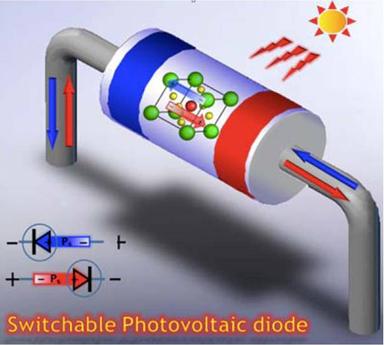 |
Unidirectional electric current flow such as that found in a diode is essential for modern electronics. It usually occurs at asymmetric interfaces such as p-n junctions or metal-semiconductor interfaces with Schottky barriers. We report on a diode effect associated with the direction of bulk electric polarization in BiFeO3 - a ferroelectric material with a small optical gap edge of ~2.2 eV. We found that bulk electric conduction in ferroelectric monodomain BiFeO3 crystals is highly non-linear and uni-directional. This diode effect switches its direction when the electric polarization is flipped by an external voltage. Significant visible-light photovoltaic effect is observed in BiFeO3 structures. These results should improve understanding of charge conduction mechanism in leaky ferroelectrics, and advance design of switchable devices combining ferroelectric, electronic, and optical functionalities. |
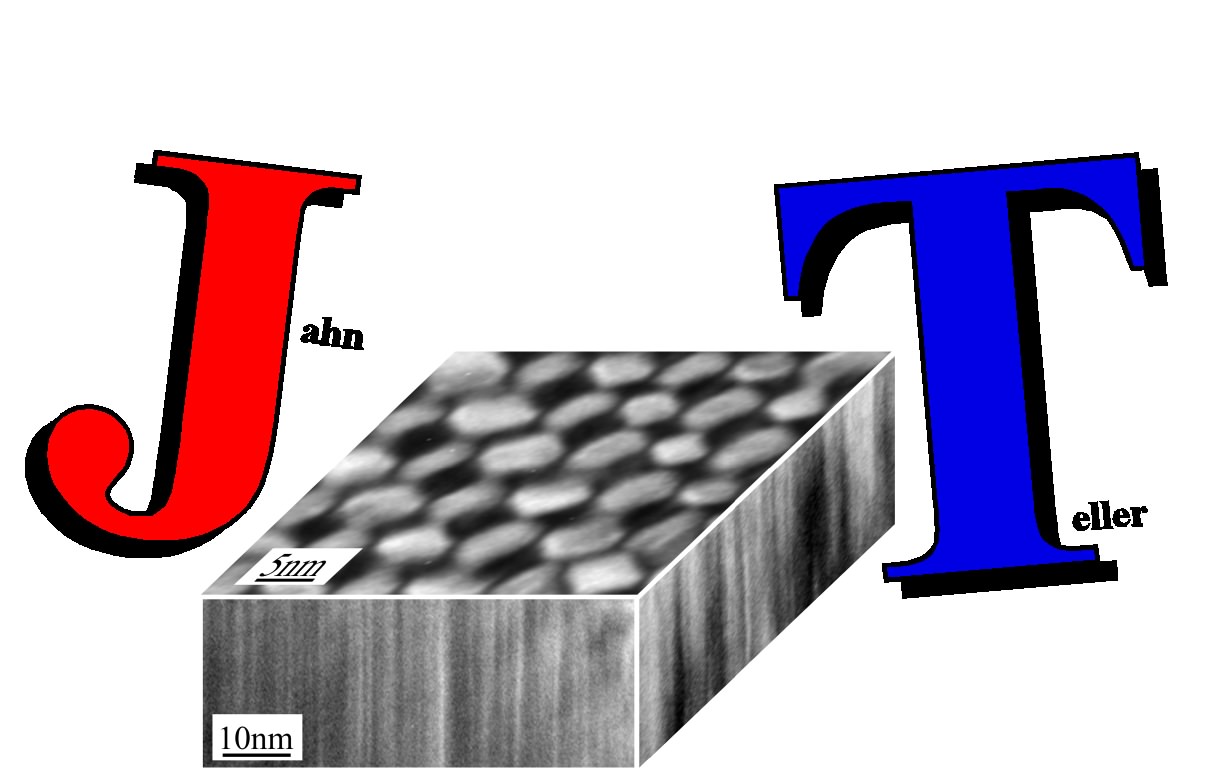 |
We could make nano-sized columnar domains with a checkerboard pattern in inorganic spinels by harnessing the Jahn-Teller structural distortion. Transmission electron microscope images reveal that the fundamental domain structures consist of two types of long nanorods with the ~4X4X70 nm3 size, which are alternatively stacked in a way that the cross sectional and side views show checkerboard and herringbone patterns, respectively. The strain induced by the Jahn-Teller distortion is discussed to cause this peculiar self-assembled nanostructure in the coherent mixture of two spinel phases. This pure solid state self-assembly can be implemented to fabricate heterogeneous nanostructures with practical functionalities. |
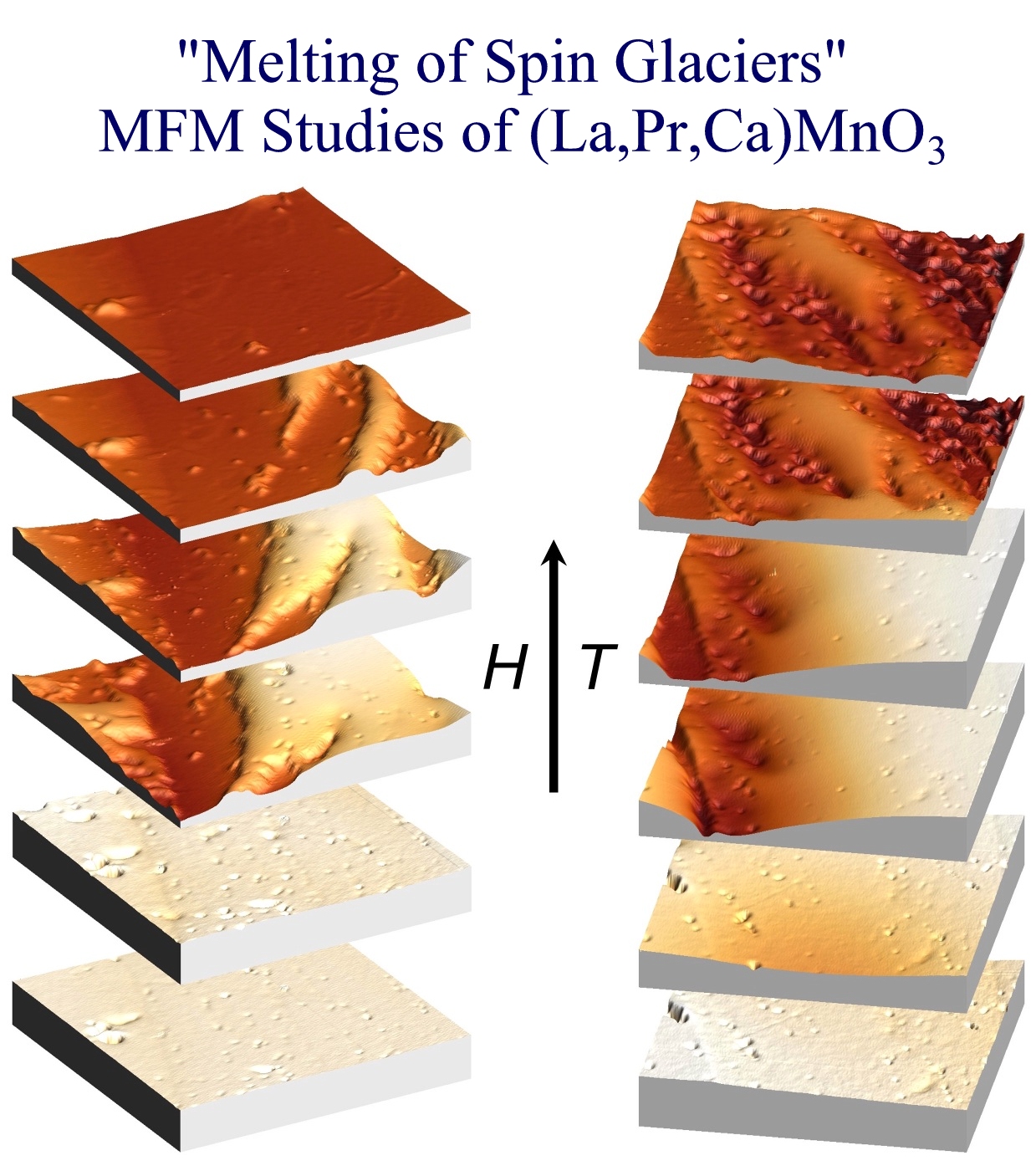 |
Here, an intriguing glass transition in (La,Pr,Ca)MnO_3 is imaged using a variable-temperature magnetic force microscope. In contrast to the speculated spin-glass picture, our results show that the observed static magnetic configuration seen below the glass-transition temperature arises from the cooperative freezing of the first-order antiferromagnetic (charge ordered) to ferromagnetic transition. Our data also suggest that accommodation strain is important in the kinetics of the phase transition. |
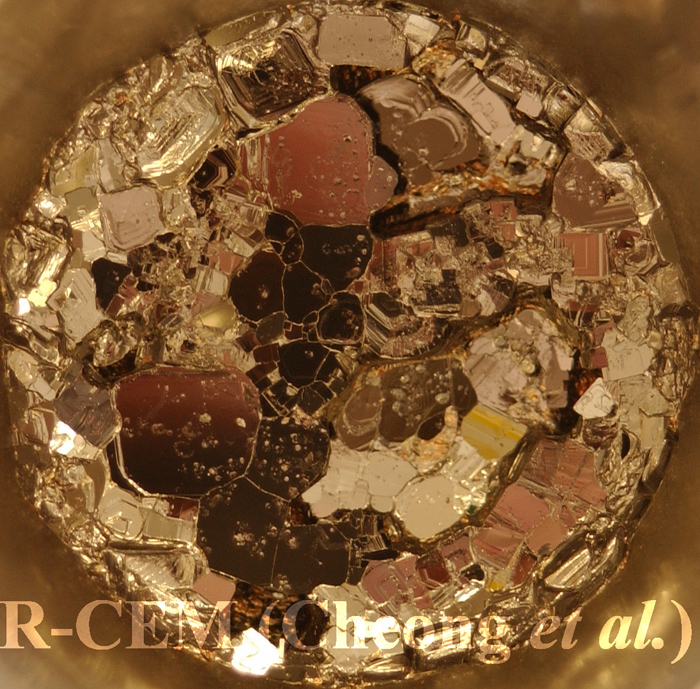 |
Multiferroic materials exhibit simultaneously magnetism and ferroelectricity, and extraordinary cross-coupling phenomena between magnetism and ferroelectricity in multiferroics have been recently discovered. Examples of the cross-coupling phenomena include the reversible 180 degree polarization flipping in TbMn2O5 (N. Hur et al., Nature 2004). Soonyong Park has recently succeeded in growing large-size single crystals (up to 2 cm) of TbMn2O5 by using a flux method. |